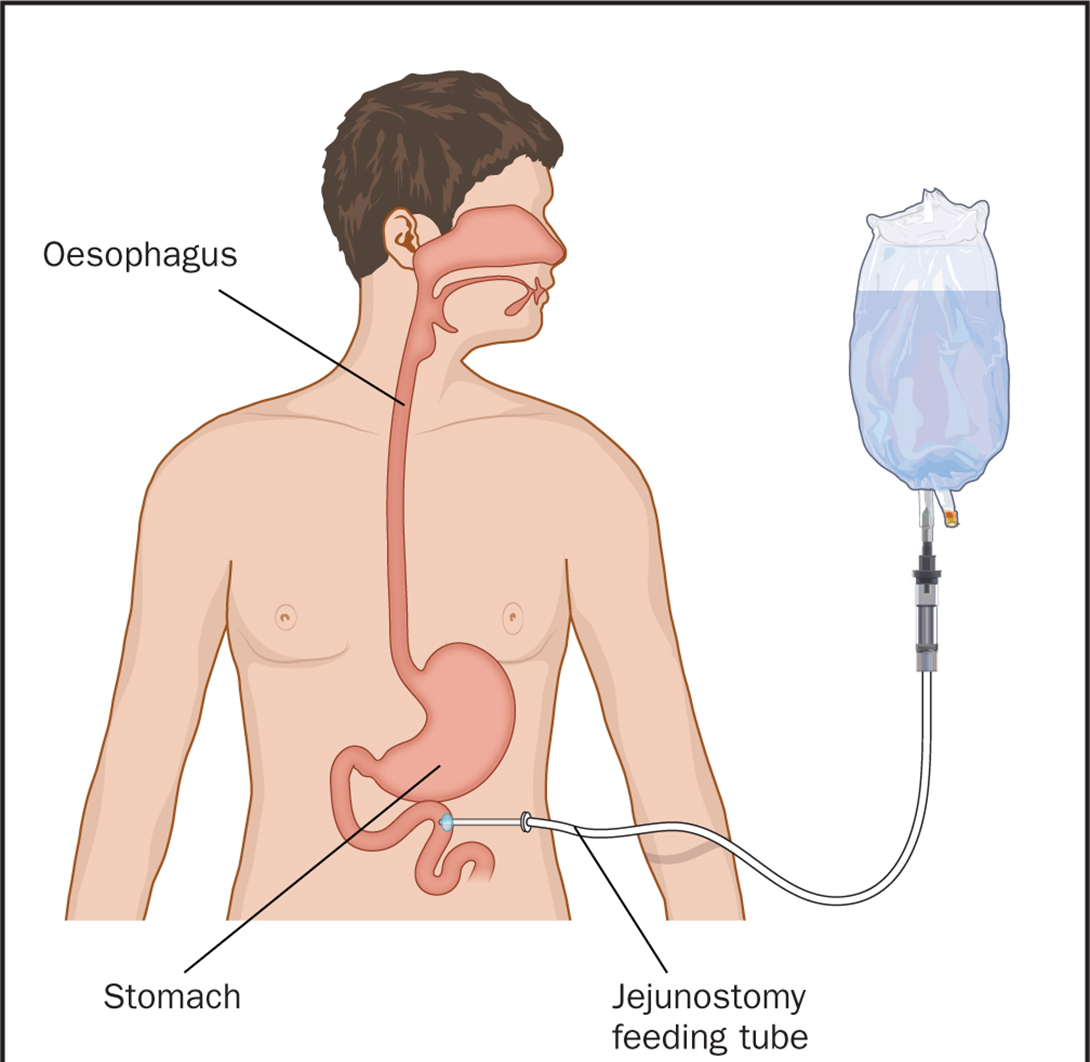A nurse on a medical surgical unit is caring for a client who has a small bowel obstruction and is receiving parenteral nutrition through a central venous catheter. Which of the following actions should the nurse plan to take? (Select all that apply)
Observe for dyspnea.
Infuse parenteral nutrition by gravity.
Administer parenteral nutrition solution within 30 min after removing from the refrigerator.
Change parenteral nutrition bag and infusion tubing every 72 hr.
Begin infusion of parenteral nutrition once central venous catheter position is confirmed by radiology.
Correct Answer : A,C,E
Choice A reason: Dyspnea is a sign of pulmonary edema, which can occur as a complication of parenteral nutrition due to fluid overload or allergic reaction¹². The nurse should monitor the client's respiratory status and oxygen saturation and report any signs of respiratory distress.
Choice B reason: Parenteral nutrition should not be infused by gravity, as this can cause fluctuations in the infusion rate and lead to hyperglycemia or hypoglycemia¹³. The nurse should use an infusion pump to deliver parenteral nutrition at a constant and controlled rate.
Choice C reason: Parenteral nutrition solution should be administered within 30 min after removing from the refrigerator, as prolonged exposure to room temperature can increase the risk of bacterial contamination and infection¹⁴. The nurse should check the expiration date and inspect the solution for any discoloration, cloudiness, or particulate matter before administration.
Choice D reason: Parenteral nutrition bag and infusion tubing should be changed every 24 hr, not every 72 hr, to prevent the growth of microorganisms and reduce the risk of infection¹⁵. The nurse should use aseptic technique when changing the bag and tubing and follow the facility's protocol for dressing changes and catheter care.
Choice E reason: Parenteral nutrition should be started only after the central venous catheter position is confirmed by radiology, as incorrect placement can cause serious complications such as pneumothorax, hemothorax, or cardiac tamponade¹⁶. The nurse should obtain a chest x-ray and wait for the provider's confirmation before initiating parenteral nutrition.
Nursing Test Bank
Naxlex Comprehensive Predictor Exams
Related Questions
Correct Answer is B
Explanation
Choice A reason: Changing the feeding to a continuous infusion may not improve the constipation, as it does not address the fluid deficit or the fiber content of the formula. Continuous infusion may also increase the risk of aspiration, diarrhea, and bacterial contamination¹.
Choice B reason: Increasing the amount of free water can help prevent or treat constipation by hydrating the stool and facilitating its passage. The client's fluid intake and output indicate a fluid deficit, which can contribute to constipation. The recommended fluid intake for adults is 30 to 35 mL/kg/day².
Choice C reason: Decreasing the infusion rate of feeding may worsen the constipation, as it reduces the caloric and fluid intake of the client. The infusion rate should be based on the client's nutritional needs and tolerance¹.
Choice D reason: Requesting a prescription for a diuretic is not appropriate, as it would further dehydrate the client and aggravate the constipation. Diuretics are indicated for clients with fluid overload, not fluid deficit³.
Correct Answer is D
Explanation
Choice A reason: Abdominal distention is a possible complication of enteral nutrition, as it may indicate gas accumulation, constipation, or intolerance to the formula. However, it is not the greatest risk to the client, as it can be prevented or managed by adjusting the formula, rate, or volume of the feeding, or by administering medications or enemas.
Choice B reason: Fluid overload is a possible complication of enteral nutrition, as it may indicate excessive fluid intake, renal impairment, or heart failure. However, it is not the greatest risk to the client, as it can be prevented or managed by monitoring the fluid balance, electrolytes, and vital signs, or by administering diuretics or fluid restriction.
Choice C reason: Glycosuria is a possible complication of enteral nutrition, as it may indicate hyperglycemia, diabetes, or infection. However, it is not the greatest risk to the client, as it can be prevented or managed by monitoring the blood glucose, urine output, and signs of infection, or by administering insulin or antibiotics.
Choice D reason: Tube obstruction is the greatest risk to the client, as it may indicate clogging, kinking, or twisting of the tube, which can impair the delivery of the nutrition and medication, and cause aspiration, infection, or perforation. Tube obstruction can be prevented by flushing the tube with water before and after each feeding or medication, and by using a syringe or a pump to administer the formula. Tube obstruction can be managed by using warm water, carbonated beverages, or pancreatic enzymes to unclog the tube, or by replacing the tube if necessary.

Whether you are a student looking to ace your exams or a practicing nurse seeking to enhance your expertise , our nursing education contents will empower you with the confidence and competence to make a difference in the lives of patients and become a respected leader in the healthcare field.
Visit Naxlex, invest in your future and unlock endless possibilities with our unparalleled nursing education contents today
Report Wrong Answer on the Current Question
Do you disagree with the answer? If yes, what is your expected answer? Explain.
Kindly be descriptive with the issue you are facing.
